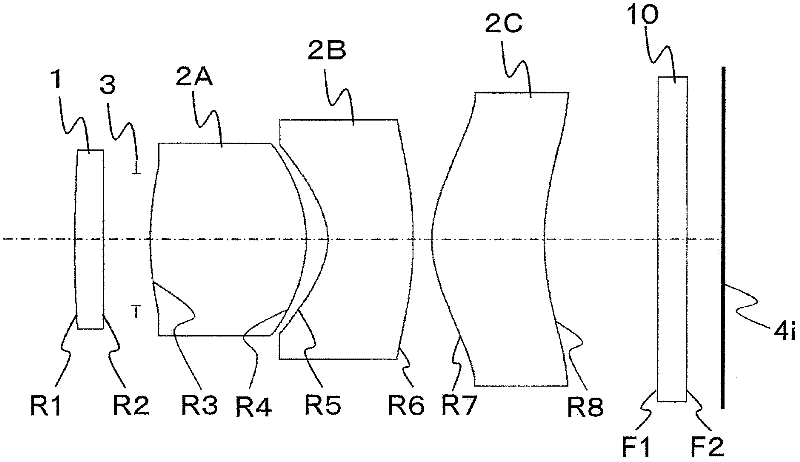Imaging device
A technology of camera device and camera surface, which can be used in installation, image communication, television, etc., and can solve problems such as light reduction.
- Summary
- Abstract
- Description
- Claims
- Application Information
AI Technical Summary
Problems solved by technology
Method used
Image
Examples
Embodiment approach 1
[0045] figure 1 It is a schematic diagram showing the configuration of the imaging device 100 according to Embodiment 1 of the present invention. The imaging device 100 is equipped with: a non-telecentric imaging optical system composed of a first lens 1, a second lens 2, a diaphragm 3, and an imaging element 4 having an imaging surface 4i; a shutter mechanism 5; a cam mechanism including a cam cylinder and a fixed cylinder. 6; a control unit 7; a motor 8; and a signal processing unit 9.
[0046] The first lens 1 is disposed closer to the subject side than the second lens 2 . Light from a subject enters the second lens 2 after passing through the first lens 1 . The second lens 2 is arranged between the first lens 1 and the imaging element 4 . The light passing through the second lens 2 is detected on the imaging surface 4 i of the imaging element 4 .
[0047]The cam mechanism 6 and the motor 8 constitute a position changing unit. The motor 8 operates the cam mechanism 6 b...
Embodiment approach 2
[0115] Next, a configuration in which the amount of change in the distance between the first lens 1 and the second lens 2 and the amount of change in the distance between the second lens 2 and the imaging surface of the imaging element 4 are the same will be described.
[0116] Figure 15 It is a schematic diagram showing the configuration of the imaging device 101 of this embodiment. The imaging device 101 includes a non-telecentric imaging optical system including a first lens 1 , a diaphragm 3 , a second lens 2 , and an imaging element 4 ; a shutter mechanism 5 ; a control unit 7 ; a motor 8 ; The second lens 2 and the diaphragm 3 are held by the inner barrel 12 , and the first lens 1 and the imaging element 4 are held by the outer barrel 13 .
[0117] The inner barrel 12 and the motor 8 constitute a position changing unit. The motor 8 moves the inner barrel 12 from an initial position (solid line) 12A to a final position (broken line) 12B based on a control signal from t...
PUM
 Login to View More
Login to View More Abstract
Description
Claims
Application Information
 Login to View More
Login to View More - R&D
- Intellectual Property
- Life Sciences
- Materials
- Tech Scout
- Unparalleled Data Quality
- Higher Quality Content
- 60% Fewer Hallucinations
Browse by: Latest US Patents, China's latest patents, Technical Efficacy Thesaurus, Application Domain, Technology Topic, Popular Technical Reports.
© 2025 PatSnap. All rights reserved.Legal|Privacy policy|Modern Slavery Act Transparency Statement|Sitemap|About US| Contact US: help@patsnap.com



